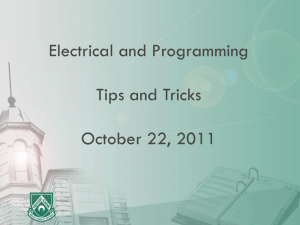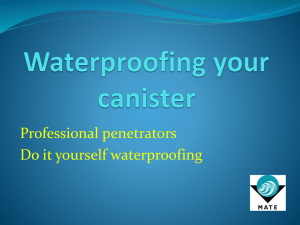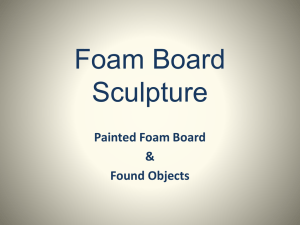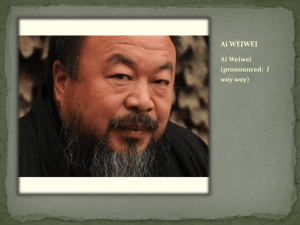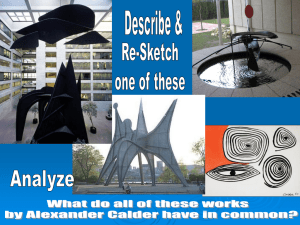Unit 4 * Introduction to materials, processes and technical skills in art
advertisement
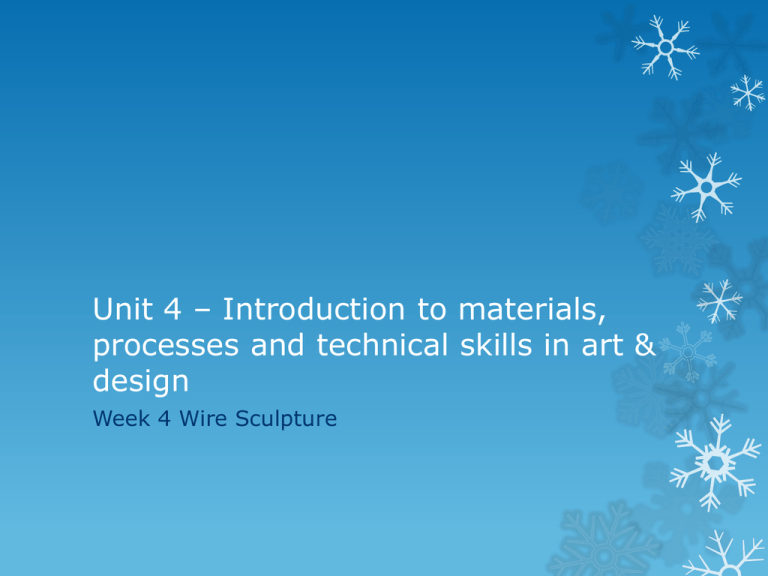
Unit 4 – Introduction to materials, processes and technical skills in art & design Week 4 Wire Sculpture Learning Outcomes List the tools utilised for wire manipulation Use primary research to help in the creation of a sculpture Create a 2 dimensional wire sculpture Create a 3 dimensional wire sculpture Evaluate the skills and materials from this lesson Assessment Criteria Unit 4: 1.1 Critically compare a range of materials and processes used in art and design through experimental application. 1.4 Evaluate the use of materials, processes and technical skills to support own art and design activities Unit 4: 1.1 Experiment with different materials and techniques within these taster sessions 1.4 Write about these sessions. What did you use? How did you use it? What are the materials like? What are they used for? Did you enjoy it? How did your test piece turn out? WHY? Equipment used in today’s lesson Pliers Used to hold and manipulate. Their flat surface means that wire can be bent at an angle. They are also able to cut wire. Used by artisans, jewellery designers, electricians and other tradesmen Side Cutters Cutting tool for wire. Used by artisans, jewellery designers, electricians and other tradesmen Long nose pliers Excellent for intricate manipulation because of their shape and they are easier to create curves. They are also able to cut wire. Used by artisans, jewellery designers, electricians and other tradesmen Chicken wire Galvanised material that is used for fencing poultry live-stock. It can be used to support as a base to support concrete and cement in housing. Artists use it as an armature base for paper-mache, mod-roc and clay sculptures. Aluminium Wire Modelling material that is easy to bend and shape but holds its form. It is available in a variety of thicknesses and is used for armatures, jewellery and sculpture Health and safety Mind your fingers and hands with the pliers, cutters, mesh and wire Watch the wire doesn’t unravel or go into your eyes Creating a 2 dimensional form Select a photograph from Uphill and draw it onto A4 paper. Use the tools to manipulate the wire and “trace” over your image using the wire in Use one continuous piece of wire to begin with Incorporate wire of a different thickness to give different linear qualities Alexander Calder, 1928 Gavin Worth Léa Mazet Creating a 3 dimensional form Select a photograph from Uphill. Use the tools to manipulate the wire and create a 3 dimensional sculpture Use the wire in any way to create your sculpture Incorporate wire of different thicknesses if required Teresa Leung Chris Moss Chris Moss Martin Senn Huang Zen Incorporating wire for unit 4: materials, processes and technical skills Wire sculpture Employment from skills used in today’s lesson Craft & Jewellery Armatures for animation Armatures for sculpture and casting Evaluation Write an evaluation of today’s materials and processes lesson Remember: What did you use? How did you use it? What are the materials like? What are they used for? Did you enjoy it? How did your test piece turn out? WHY? Homework Think about how you are going to create your final outcome using the skills from these taster sessions Choose an image which you will use for your Uphill project Consider how the final outcome will look. Will it be a sculpture, jewellery, 2 dimensional, 3 dimensional, a water colour painting, embroidered part of a garment, or anything else you can think of Use research to help you with ideas! Learning Outcomes List the tools utilised for wire manipulation Use primary research to help in the creation of a sculpture Create a 2 dimensional wire sculpture Create a 3 dimensional wire sculpture Evaluate the skills and materials from this lesson




